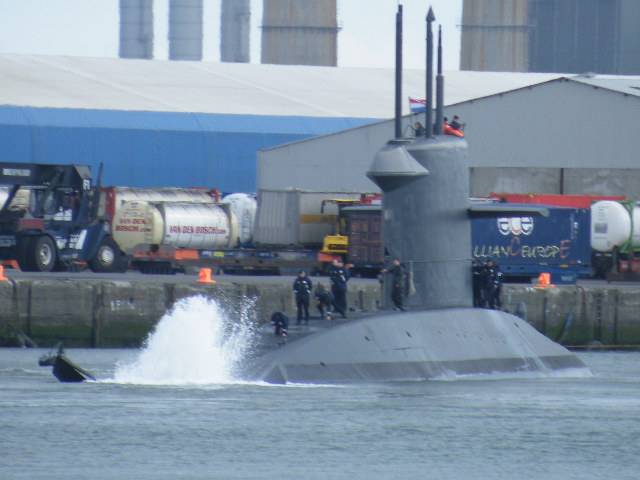#navalvisitors - One of the world's most sophisticated submarines and an accompanying support ship of the Royal Netherlands Navy arrived in Dublin Port yesterday for a three day crew rest and recreation visit, writes Jehan Ashmore.
This is not the first Dutch Navy visitor to the capital this year as HNLMS Van Speijk, a Karel Doorman-class frigate was part of a three EU member state flotilla that called last month.
On this current visit, the first to arrive in Dublin Bay was submarine HNLMS Zeeleeuw, which has a 2,650 tonnes displacement (when submerged). In advance of entering the port a tug along with a small craft assisted the diesel-electric powered submarine while off the South Burford Bouy.
HNLMS Zeeleeuw was commissioned in 1990 however the submarine unintentionally became the first of the 'Walrus' class as HNLMS Walrus was delayed for a long period following a serious fire during construction. The 68m submarine was built by Rotterdamsche Droogdok Maatschappij.
The Walrus class instead of using a cross-shaped assembly of stern diving planes and rudders, they mount four combined rudders and diving planes in an "X" tail configuration (as more clearly demonstated in related story photo).
In total there are four submarines in the class and the quartet play a pivotal role in operations given these submarines have stealth designed technology. Deployments include overseas patrols in the Caribbean Sea with calls to Williamstad, the capital of the Netherlands Antilles.
The second visitor to Dublin is HNLMS Mercuur, which is the only surface vessel designed specifically to support the operations of the Dutch Navy. The 64m vessel was built by Damen Schelde Naval Shipbuilding and entered service in 1987.
Both naval visitors are berthed downriver in the main part of the port having been allocated berths at Ocean Pier within Alexandra Basin. They will not be open to public tours.
The pair are scheduled to depart on Friday with an hour appart of each other exiting the port in the morning.
































































